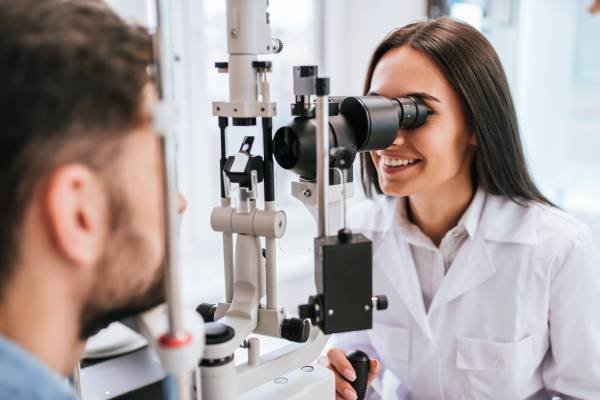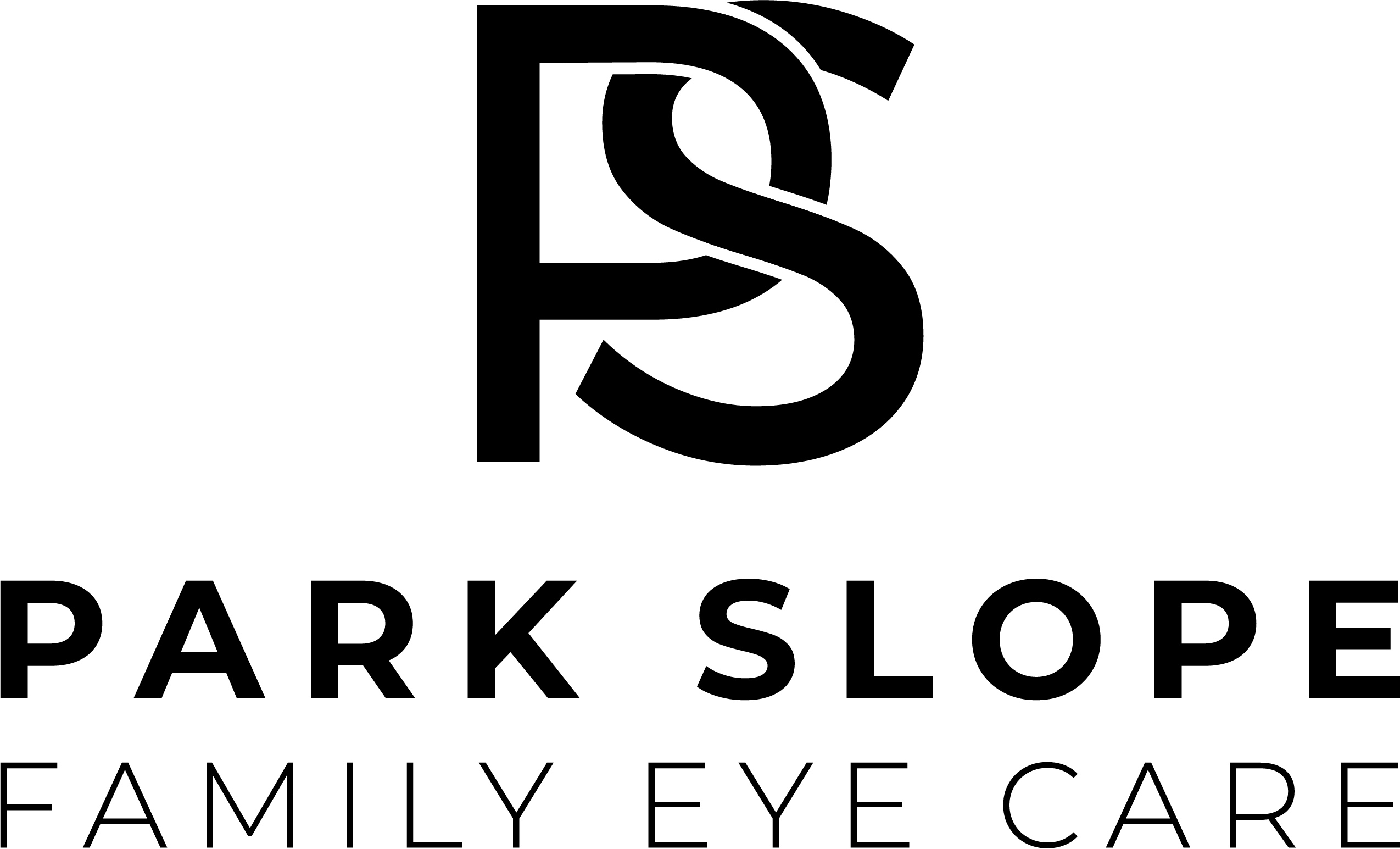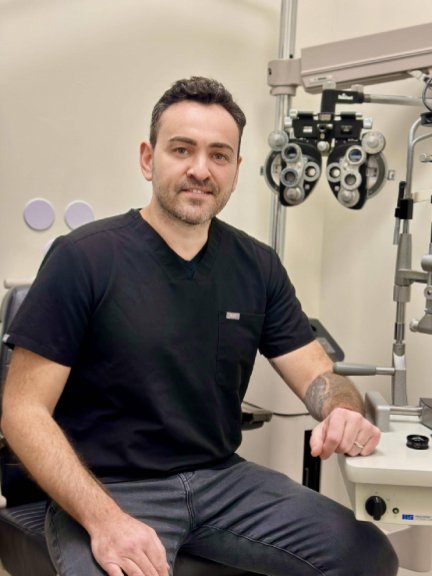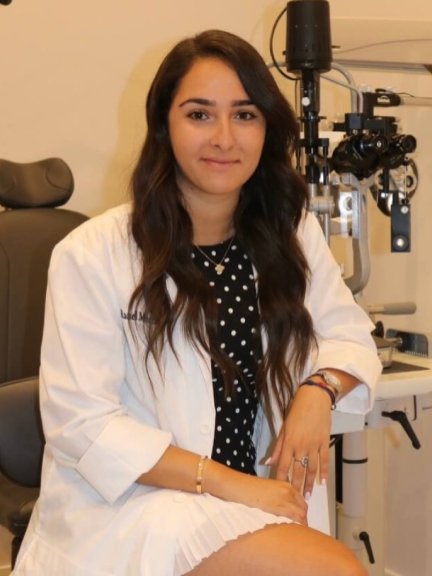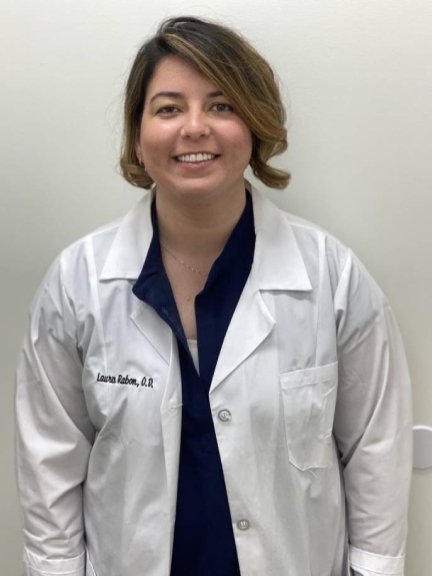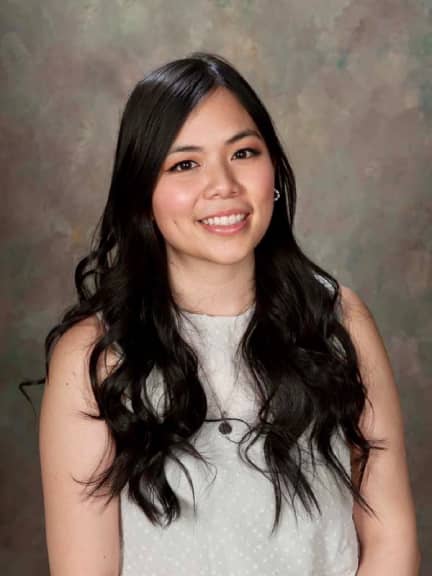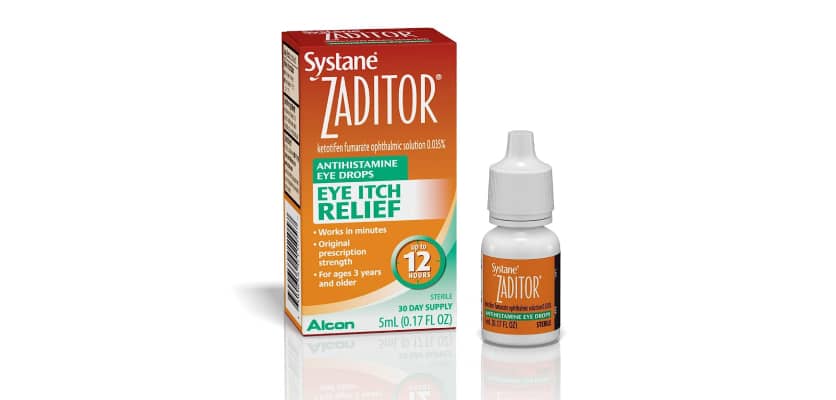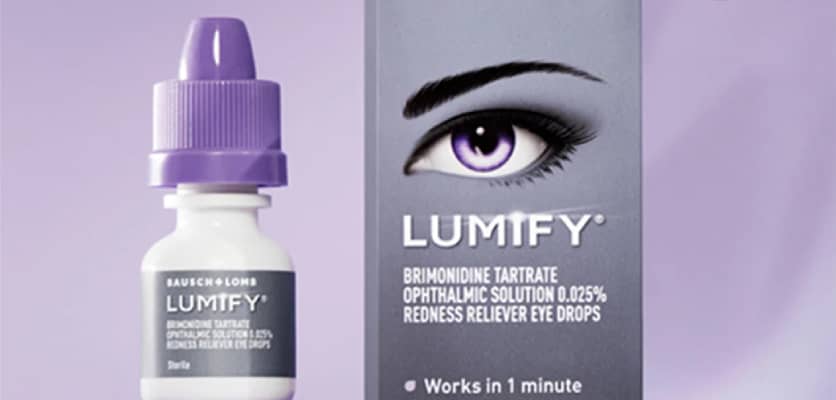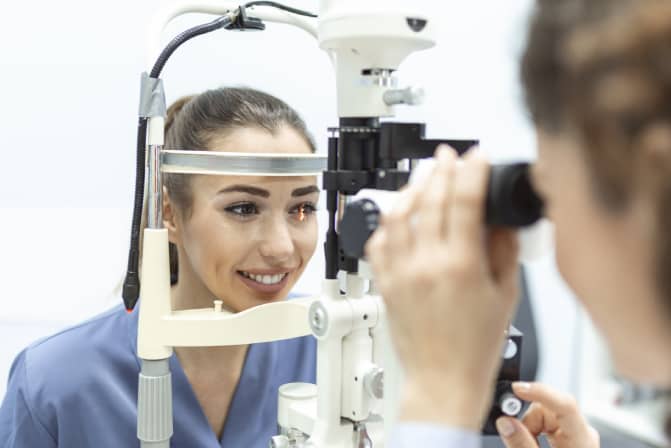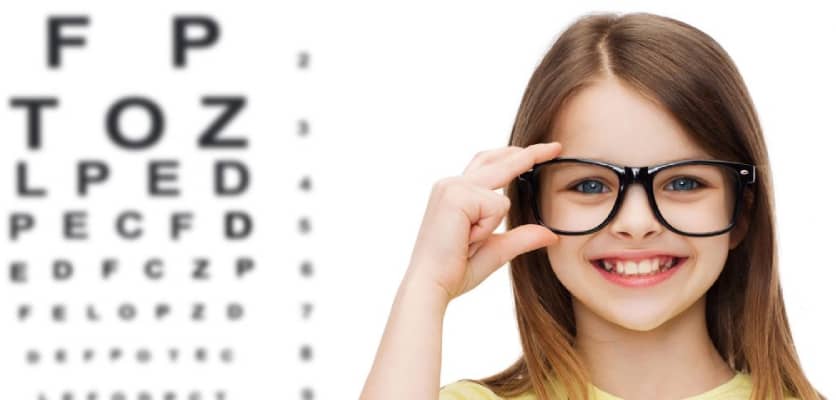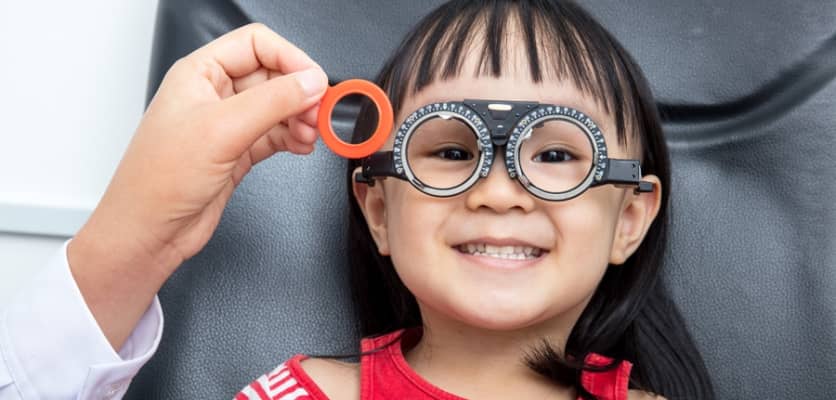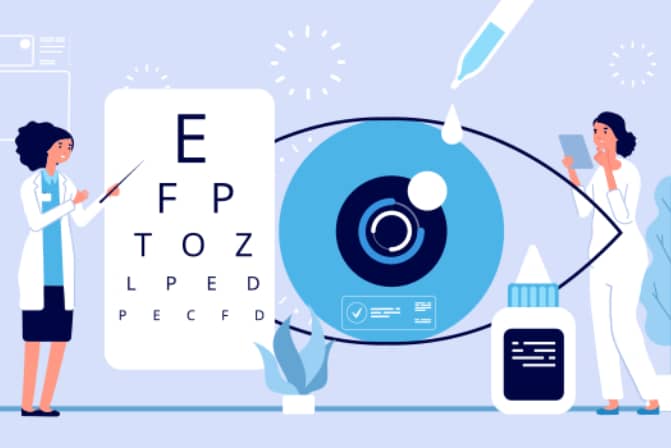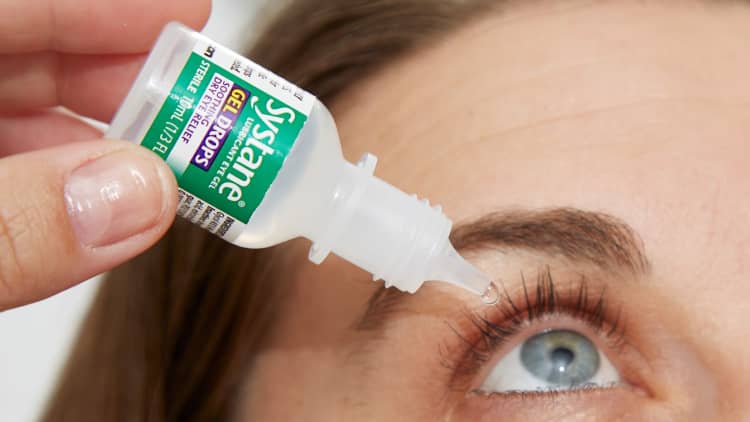This is the "eye chart" test that most people are familiar with. You're positioned at 20 feet away from the Snellen chart and asked to identify a series of letters printed. The lines of type get smaller as you move down the chart. It is done one eye at a time.
Refraction refers to the way light waves are bent as they pass through the eye. Refraction will help your eye doctor determine what vision needs are appropriate for you to provide the sharpest, clearest vision.
Your vision provider may use a device called a phoropter to help determine your refractive error. This exam is performed in a dark room.
This test helps determine your field of vision for the area right in front of you, or what you can see without moving your eyes. It is a functional assessment of your eye health.
While there are many different types of visual field exams, the most common procedure is performed with a device called an auto perimeter.
A slit lamp is a microscope that lets your doctor see all the structures in and around your eye.
When examining the front of your eye, your provider may use eye drops containing a special dye.
Structures that your eye doctor will look at include your lids, lashes, cornea, iris, lens, anterior and posterior chamber.
This exam measures the pressure inside your eye referred to as intraocular pressure. It helps your eye doctor detect glaucoma, a disease that causes pressure to build up inside your eyes and can cause blindness. Glaucoma can be treated if it's caught early.
A cross-sectional ultrasound sometimes referred to as OCT (Optical Coherence Tomography ) is a non-invasive diagnostic technique that renders a cross-sectional view of various parts of the retina.
You may be prompted to stare at a large target through a machine called a phoropter, while your eye care provider shines a light in your eyes and flips through a series of lenses. This test can help determine if you need vision correction, like eyeglasses or contact lenses.
Optos Retinal Image Exams (wide field retinal photography) is available in our practice. This involves the use of revolutionary diagnostic equipment to view the back of the eye. This imaging uses a non-invasive scanning laser. During the exam, the non-dilating camera will capture an image of the retina in one shot. The results allow us to view up to 220° degrees into the periphery of the eye. The exam is easy on the patient, and the results are available immediately.
